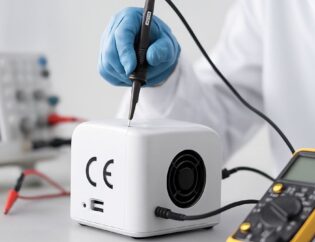
CE Marking & Conformity Assessment Processes: A Step-by-Step Guide
For any manufacturer aiming to enter the European market, the CE mark is a key legal requirement demonstrating that products meet safety, health, and environmental standards. To obtain CE marking, certain steps must be followed. This article walks through the CE marking process, step by step.
CE Marking Process: Core Steps
The CE process comprises the stages used to prove a product’s conformity with the relevant EU regulations and standards.
1) Identify the Product Category
Every product is assessed under one or more specific EU directives/regulations. The first step is to determine which ones apply.
Example regulations/directives:
- Machinery Directive 2006/42/EC
- Construction Products Regulation (EU) 305/2011
- Low Voltage Directive (LVD) 2014/35/EU
- Electromagnetic Compatibility (EMC) 2014/30/EU
- Medical Devices Regulation (EU) 2017/745 (MDR)
- ATEX Directive 2014/34/EU
2) Determine the Essential Requirements
Each directive has its own technical and safety requirements. At this stage, evaluate conformity in design, manufacturing, and intended use.
Example requirements:
- Electrical safety
- Mechanical robustness
- Environmental compliance (e.g., RoHS, REACH)
3) Select the Conformity Assessment Route
Choose the appropriate assessment module(s) based on product type and risk.
Common modules include:
- Module A: Internal production control (manufacturer’s own tests)
- Module B: EU-type examination (design reviewed by a notified body)
- Modules C, D, E, F, H: Various production, product, and quality-assurance pathways involving inspections and/or notified body oversight
4) Testing and Inspection
Test the product against the identified harmonized standards. These tests demonstrate that the product meets the applicable safety and performance criteria.
5) Compile the Technical Documentation (Technical File)
Manufacturers must prepare and retain a technical file proving conformity.
Typical contents:
- Design and manufacturing information
- Test results and reports
- Risk assessment documentation
6) Prepare the EU Declaration of Conformity (DoC)
The DoC is the manufacturer’s formal statement that the product complies with the relevant EU legislation. It establishes legal responsibility for conformity.
7) Affix the CE Marking
Once all steps are complete, affix the CE mark to the product.
Key points:
- The marking must be correctly proportioned, visible, and legible.
- It must not be misleading or accompanied by confusing/incorrect information.
Bottom line: CE marking is essential for placing products on the EU market. Manufacturers can complete the process by identifying the applicable legislation, performing the required tests, compiling a robust technical file, issuing the DoC, and correctly affixing the CE mark.









